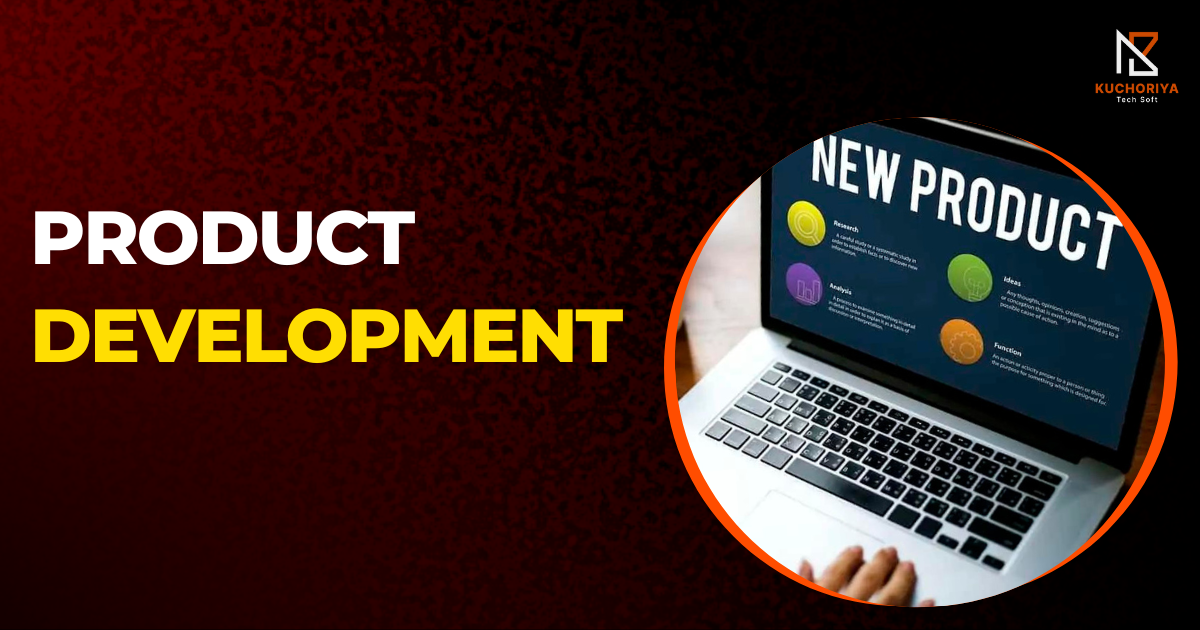Cost to Build a Smart Home Automation App in The USA
Imagine controlling your lights, adjusting the thermostat, or even locking your doors – all from the convenience of your smartphone. Smart home automation apps are rapidly transforming American households, offering a glimpse into the future of connected living. But before embarking on this exciting journey, understanding the development cost is crucial. This guide by Kuchoriya Softwares, a top-ranked mobile app development company in the USA, explores the functionalities, cost breakdown, and key factors influencing the development of your smart home automation app in 2024.
Smart home automation apps act as the conductor, orchestrating a symphony of connected devices within your home. Here are some core functionalities to consider:
- Remote Control: Switch on lights, adjust thermostats, unlock doors, and control appliances – all from your smartphone.
- Scheduling and Automation: Set schedules for lights, thermostats, and appliances to create a personalized and energy-efficient environment.
- Real-time Monitoring: Track energy consumption, receive alerts when doors or windows open, and maintain a sense of security.
- Voice Control Integration: Leverage the power of voice assistants like Alexa or Google Assistant for hands-free control of your smart home devices.
- User Management: Create user profiles, assign permissions, and manage access to different smart home functionalities.
Developing a smart home automation app requires a strategic budget allocation. Here's an estimated split-up to provide a clearer picture:
- Planning and Requirements Gathering (10-15%): Defining your app's purpose, target audience, and key features lays the groundwork.
- Design and Prototyping (10-15%): Creating user-friendly interfaces and interactive prototypes for user testing and feedback.
- Development (40-55%): Building the core functionalities, integrating APIs for smart home devices, and ensuring platform compatibility.
- Testing and Quality Assurance (10-15%): Identifying and fixing bugs for a robust and secure app experience.
- Deployment and Launch (5-10%): Publishing your app on app stores and ensuring smooth user onboarding.
- Ongoing Maintenance and Updates (5-10%): Addressing bugs, adding new features, and keeping your app up-to-date with evolving technologies.
Several factors influence the cost of developing your smart home automation app:
Complexity of Features:
- Simple App (Lower Cost): Basic functionalities like controlling lights or thermostats involve less development time and resources.
- Medium Complexity App (Moderate Cost): Scheduling, user profiles, and limited device integration require more effort and increased cost.
- Complex App (Higher Cost): Real-time monitoring, energy management, advanced voice control integration, and extensive device compatibility demand robust development and expertise.
Devices & Platform:
- Native App Development (Android & iOS): Separate apps for each platform offer the best performance but incur higher costs due to maintaining two codebases.
- Cross-Platform App Development: Developing a single codebase for both Android and iOS can be more cost-effective, with potential limitations in customization compared to native apps.
Designing UX/UI:
- Clean and Simple Design: An intuitive and user-friendly interface is essential. Complex designs with animations or 3D graphics require more resources and specialized design tools, impacting cost.
Integration with APIs and Hardware:
- API Integration Costs: Integrating with various smart home devices and platforms requires utilizing their APIs. Some APIs might have licensing fees or require subscriptions, adding to the development cost.
- Hardware Compatibility: The wider the range of compatible smart home devices, the more complex the integration process can be, potentially increasing development time and cost.
Data Privacy and Security:
- Robust Security Measures: Smart home apps handle sensitive data. Implementing strong security features like data encryption and secure authentication protocols is crucial and may add to the development cost.
Expertise and Location of the Development Team:
- Experienced App Developers: Hiring highly skilled app developers with expertise in smart home automation and IoT integration will ensure a high-quality app but may come at a premium cost.
- Development Team Location: Development costs can vary depending on the location of the development team. Hiring developers in regions with lower development costs can be a consideration, but thorough vetting to ensure quality and communication effectiveness is essential.
Developing a successful smart home automation app requires a well-coordinated effort, broken down into these fundamental stages:
Defining the Features and Function (The Score):
This initial stage lays the groundwork for your app's success. It involves:
- Identifying your app's purpose: What problem are you solving for users?
- Target audience analysis: Who are your ideal users and what are their needs?
- Key feature definition: What functionalities will your app offer (e.g., light control, scheduling, security)?
Workshops, competitor research, and user research are conducted during this stage. This ensures your app addresses a genuine market need and integrates seamlessly with popular smart home devices.
Analysis and Market Research (Understanding the Audience):
A thorough understanding of the market landscape is essential. This involves:
- Industry trends: Staying up-to-date on the latest smart home technologies and user preferences allows you to create a future-proof app.
- Competitor analysis: Analyzing existing apps helps you identify strengths and weaknesses, enabling you to create a differentiated offering.
- User pain points: Understanding user frustrations with current solutions allows you to develop features that address their specific needs.
By conducting thorough market research, you can ensure your smart home automation app stands out in a competitive market.
UX/UI Design (Crafting the User Experience):
A user-friendly and visually appealing interface (UI) is essential for app success. This stage involves:
- Creating user personas: Developing user personas helps designers understand your target audience's needs, behaviors, and expectations.
- Wireframing and prototyping: These low-fidelity mockups allow you to visualize the app's layout and user flow before investing in high-fidelity design.
- UI design: Skilled UI/UX designers create intuitive interfaces with a focus on user experience. This includes designing icons, buttons, and other visual elements that are easy to understand and navigate.
User testing throughout the design process is crucial to ensure a smooth and intuitive user experience.
Frontend Development (Building the Stage):
Once the design is finalized, developers translate the UI mockups into a functional app:
- Front-end development languages: Technologies like HTML, CSS, and JavaScript are used to build the user interface that users interact with.
- Responsiveness: Ensuring the app displays and functions flawlessly across different devices (smartphones, tablets) is crucial for a seamless user experience.
The frontend development stage brings your app's visual design to life, creating a user-friendly interface for interacting with the smart home environment.
Backend Development (The Engine Room):
The backend is the powerhouse of your app, handling core functionalities:
- Server-side logic: This refers to the programming that defines how the app functions behind the scenes.
- Database management: Data storage for user information, device settings, and other app-related data is established.
- API integration: APIs (Application Programming Interfaces) allow your app to communicate with smart home devices and third-party services (voice assistants, cloud storage).
Troubleshooting and Testing (Ensuring Quality):
Rigorous testing is essential to identify and fix bugs before launch:
- Functional testing: This ensures all features work as intended.
- Performance testing: This evaluates app speed and stability across different devices and network conditions.
- Security testing: Identifying and addressing vulnerabilities is crucial for protecting user data and ensuring app security.
Thorough testing guarantees a high-quality app that delivers a reliable and secure user experience.
App Launch (Showtime!)
After months of meticulous development, it's finally time to unleash your smart home automation app to the world:
- App Store submission: This involves preparing your app listing, screenshots, and descriptions for both the Google Play Store and Apple App Store. Following app store guidelines and adhering to their review processes are crucial for a smooth launch.
- Marketing and promotion: Developing a comprehensive launch strategy is essential to generate user awareness and downloads. This might involve utilizing various marketing channels like social media campaigns, influencer marketing, or app store optimization (ASO) techniques to improve your app's discoverability.
Ongoing Support and Maintenance (Continuous Performance):
The development journey doesn't end with the launch. Ongoing support and maintenance are crucial for long-term success:
- Bug fixes and updates: Addressing bugs reported by users and releasing regular updates with new features and security patches is essential for maintaining a positive user experience.
- Server maintenance: Ensuring your app's servers are functioning optimally and can handle user traffic is crucial for app stability.
- User feedback and analytics: Continuously gathering user feedback and monitoring app analytics allows you to identify areas for improvement and make data-driven decisions for future updates.
A successful smart home automation app empowers users to control their homes with ease and efficiency. Here are some essential features to consider:
Voice Control Integration:
Leverage the power of virtual assistants like Alexa or Google Assistant for hands-free control. Users should be able to adjust thermostats, turn on lights, or lock doors with simple voice commands.
Granular Device Control:
Provide users with the ability to control individual smart home devices or create groups for controlling multiple devices simultaneously. This allows for greater customization and convenience.
Timers and Scheduling:
Automate routines and optimize energy usage with features like scheduling lights to turn on/off at specific times or setting thermostats to adjust automatically based on the time of day or occupancy.
Remote Access:
Grant users the ability to monitor and control their smart home environment from anywhere, offering peace of mind and the ability to address potential issues remotely.
Push Notifications:
Keep users informed with timely alerts about important events, such as security breaches, door sensor triggers, or high-water conditions in the basement (if connected to smart water sensors).
Third-Party Services and Device Integration:
Expand functionality by seamlessly integrating with popular smart home devices, platforms, and services. This allows users to control a wider range of devices within a single app.
Insights and Data Analytics:
Provide users with valuable insights into their smart home usage. This can include data on energy consumption, appliance usage patterns, or room temperature trends. By leveraging data analytics, users can make informed decisions to optimize their smart home environment for increased efficiency and cost savings.
Partner with Kuchoriya Softwares: Your Smart Home Automation App Development Experts
By incorporating these essential features, you can create a feature-rich smart home automation app that empowers users and simplifies their lives. At Kuchoriya Softwares, a leading mobile app development company in the USA, we understand the intricacies of smart home technology and user needs. Our team of skilled developers possesses the expertise to translate your vision into a user-friendly and robust app. We take a collaborative approach, working closely with you throughout the development process to ensure your app meets your specific requirements and delivers exceptional value to your users.
For more information, click here www.kuchoriyatechsoft.com
We are all over the world
United State
9765 keystone court, Clarence, NY 14031 , USA
Brazil
Bispo César da Corso Filho, 1266, San Carlos, São Paulo, Boa Vista, Brazil, 13575-331
UAE
118, JLT Cluster V , AI Sarayat St, opposite Damas jewellery , Dubai United Arab Emirates Dubai 91929
Italy
Viale dell'Esperanto, 71, Formia, Italy, Lazio IT
Australia
Unit 14G, 3 darling point road, darling point, Sydney, NSW, Australia, 2027
IRAN
Until 5-Morvarid Apartment- Between Hore 8 and 10 Avenue-Shahabnia Street-Babol-Mazandaran, 4718747872













































































